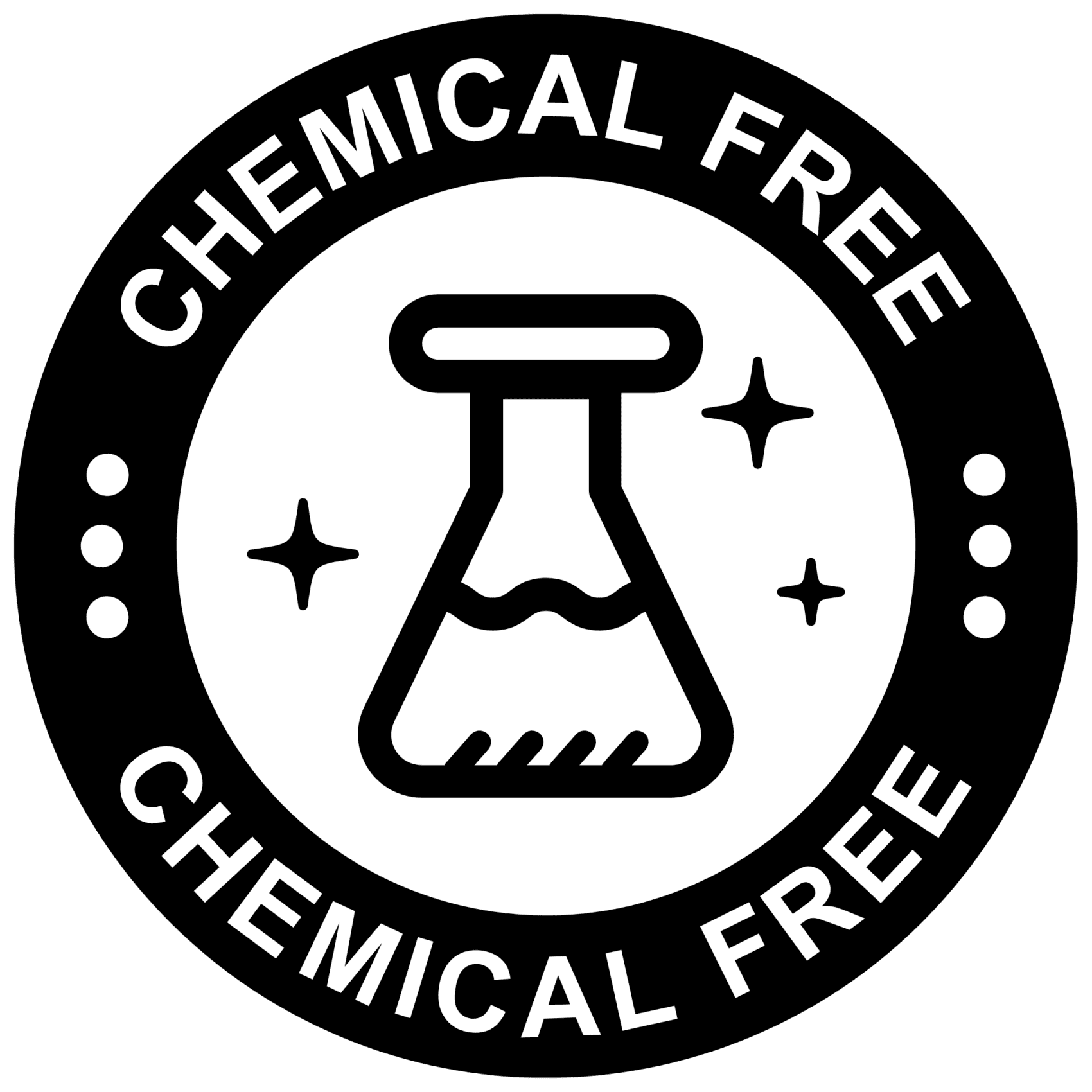Introduction to PFAS Chemicals
Per- and polyfluoroalkyl substances (PFAS) are a group of man-made chemicals that have been used in a variety of industries around the globe, particularly in the United States since the 1940s. PFAS are widely used due to their ability to resist heat, oil, stains, grease, and water—making them valuable in a vast array of consumer products. Common uses include non-stick cookware (e.g., Teflon), stain-resistant fabrics and carpets, water-repellent clothing, food packaging, and firefighting foams.
Persistence and Accumulation in the Environment
One of the defining characteristics of PFAS is their chemical stability, which leads to their persistence in the environment. PFAS do not break down easily and can accumulate over time in the environment and in human and animal tissue. This persistence is often referred to as the “forever chemicals” problem. The environmental accumulation of PFAS is a growing concern, as these chemicals can be found in soil, sediments, and water bodies, including drinking water sources.
Overview of Health Concerns
The widespread use and persistence of PFAS have raised significant health concerns. Research has linked PFAS exposure to a range of health issues, including endocrine disruption, which can lead to hormonal imbalances and associated health problems. PFAS have been associated with increased cholesterol levels, changes in liver enzymes, increased risk of thyroid disease, and decreased vaccine response in children. They are also linked to reproductive and developmental problems, including decreased fertility and low birth weight. Moreover, certain PFAS compounds have been associated with increased risks of certain cancers, such as kidney and testicular cancer. The potential health impacts of PFAS exposure are a major concern for both individuals and communities, particularly those near industrial sites where PFAS are produced or used.

Do you have the most commonly used but toxic, disease bringing chemicals in your skin care? Many chemicals in skincare are hormone disruptors and make menopause symptoms worse.
Find out more…
Sources of PFAS Contamination
Industrial and Manufacturing Sites
Per- and polyfluoroalkyl substances (PFAS) have been extensively used in various industrial applications due to their unique properties, such as resistance to heat, water, and oil. Industrial and manufacturing sites are significant sources of PFAS contamination. These sites include facilities that produce PFAS or use them in manufacturing processes, such as the production of non-stick cookware, textiles, and firefighting foams. The use of PFAS in chrome plating, electronics manufacturing, and the production of some food packaging materials also contributes to environmental contamination. PFAS can be released into the air, water, and soil during manufacturing processes and through the disposal of PFAS-containing waste.
Military and Firefighting Facilities
Military and firefighting facilities are also known for their PFAS contamination, primarily due to the use of aqueous film-forming foam (AFFF) for firefighting and training exercises. AFFF contains high levels of PFAS, which can leach into groundwater and surface water, leading to contamination of nearby water supplies. The persistence of PFAS in the environment means that areas once used for firefighting training can remain contaminated for decades, posing long-term risks to human health and ecosystems.
Food Packaging and Agricultural Practices
PFAS are commonly found in food packaging materials, including fast-food wrappers, microwave popcorn bags, and pizza boxes, due to their grease-resistant properties. When food comes into contact with these materials, PFAS can migrate into the food and enter the human body upon consumption. Additionally, agricultural practices can contribute to PFAS contamination when PFAS-containing sewage sludge is used as fertilizer, leading to the accumulation of these chemicals in soil and crops, and eventually entering the food chain.
Atmospheric Dispersion
Another pathway for PFAS contamination is through atmospheric dispersion. PFAS can volatilize into the air from industrial sites and contaminate distant areas, including regions where no direct PFAS sources are present. This long-range transport can occur through various atmospheric processes, resulting in the deposition of PFAS onto soil and water bodies far from their original source. The widespread presence of PFAS in the environment, even in remote locations, is indicative of their ability to disperse through the atmosphere.
Exposure Pathways to Humans
Contaminated Drinking Water
One of the primary exposure pathways for per- and polyfluoroalkyl substances (PFAS) is through contaminated drinking water. PFAS can enter water supplies from various sources, including industrial discharges, firefighting foam runoff, and leachate from landfills. Due to their chemical stability and resistance to degradation, PFAS persist in water bodies and can contaminate public water systems and private wells. Studies have detected PFAS in water sources globally, often at concentrations exceeding health advisory levels. The ingestion of PFAS-contaminated water over time can lead to bioaccumulation in the human body, posing significant health risks.
Food Supply Contamination
The contamination of the food supply is another significant exposure route for PFAS. These chemicals can accumulate in the tissues of plants and animals, leading to the presence of PFAS in various food products. Sources of food contamination include the uptake of PFAS by crops irrigated with contaminated water, the ingestion of PFAS by livestock, and the bioaccumulation in fish and other aquatic organisms. Additionally, PFAS are used in food packaging materials for their grease-resistant properties, which can lead to the migration of these substances into food.
Textiles and Consumer Products
PFAS are widely used in the production of consumer products such as non-stick cookware, stain-resistant carpets, water-repellent clothing, and other textiles. The use of these products can lead to direct skin contact with PFAS or indirect ingestion through hand-to-mouth transfer. Moreover, the degradation of these products can release PFAS into the environment, further contributing to human exposure through dust and air.
Occupational Exposure
Individuals working in industries that manufacture or use PFAS, such as chemical production facilities, firefighting, and the textile industry, are at risk of occupational exposure. These workers can be exposed to PFAS through inhalation of contaminated air or dermal contact with PFAS-containing materials. The level of exposure in occupational settings can be significantly higher than environmental exposures, necessitating stringent safety measures and monitoring to protect the health of workers.
Do you know the three main ways that your body gets in touch with harmful chemicals with everyday products? Knowledge is Power!
The Ultimate Detox Guide will tell you how to lower your exposure to harmful chemicals!

Health Impacts of PFAS Exposure
Endocrine Disruption and Hormonal Interference
Per- and polyfluoroalkyl substances (PFAS) are a group of chemicals that have been linked to a range of adverse health effects, including endocrine disruption. These chemicals can mimic the body’s hormones and interfere with the endocrine system, which regulates growth, development, metabolism, and reproduction. PFAS have been shown to bind to hormone receptors, alter hormone concentrations, and affect hormone signaling pathways. This disruption can lead to developmental, reproductive, and immune problems, as well as an increased risk of certain cancers.
Links to Chronic Diseases and Conditions
Studies have found associations between PFAS exposure and several chronic diseases and conditions. These include thyroid disease, where PFAS may interfere with thyroid hormone production and metabolism, potentially leading to hypothyroidism or hyperthyroidism. PFAS exposure has also been linked to increased cholesterol levels, which is a risk factor for heart disease. Additionally, there is evidence suggesting a connection between PFAS and type 2 diabetes, as these chemicals may affect glucose metabolism and insulin resistance.
Reproductive Health and Developmental Effects
PFAS exposure has been associated with various reproductive issues. In women, PFAS can lead to reduced fertility, changes in menstrual cycles, and complications during pregnancy such as preeclampsia. For men, there may be a decrease in sperm quality and count. Developmental effects include potential links to lower birth weights and altered physical development in children. The impact on reproductive health is particularly concerning because it can have long-term consequences for future generations.
Cancer Risks
Exposure to certain PFAS has been associated with an increased risk of cancers, particularly testicular and kidney cancer. The evidence suggests that PFAS may act as a carcinogen in the body, although the exact mechanisms are not fully understood. The potential for PFAS to contribute to cancer development adds to the urgency of addressing these chemicals in our environment.
Immune System Effects
PFAS have been shown to affect the immune system in multiple ways. They can reduce the efficacy of vaccines by interfering with the body’s antibody response, making individuals more susceptible to infectious diseases. PFAS exposure has also been linked to increased rates of asthma and allergies in children. The immune system effects are particularly concerning given the importance of a robust immune response for overall health and disease prevention.
In conclusion, the health impacts of PFAS exposure are wide-ranging and deeply concerning. As research continues to uncover the full extent of these effects, it is clear that reducing PFAS exposure is critical for protecting public health.

Feeling You Have a Right to Safe Beauty & Fem Care?
If so, it may be time for a change. It starts with knowledge. We have a few suggestions in our new guides.
Regulatory Landscape and Safety Standards
Current Regulations on PFAS
Per- and polyfluoroalkyl substances (PFAS) are a group of man-made chemicals that have been used in industry and consumer products worldwide since the 1950s. PFAS are widely recognized for their persistence in the environment and in the human body, leading to the nickname “forever chemicals.” Regulatory efforts to manage PFAS contamination have been evolving as scientific understanding of their health impacts grows.
In the United States, the Environmental Protection Agency (EPA) has issued health advisories for two of the most studied PFAS chemicals: perfluorooctanoic acid (PFOA) and perfluorooctane sulfonate (PFOS). As of 2023, the EPA has proposed a national primary drinking water regulation for PFOA and PFOS, setting non-enforceable maximum contaminant level goals (MCLGs) at zero and seeking public comment on enforceable standards.
Internationally, the regulatory landscape is varied. The European Union (EU) has been proactive in regulating PFAS, with several member states implementing their own limits on PFAS in drinking water and taking steps to restrict their use in various products. The Stockholm Convention on Persistent Organic Pollutants, an international environmental treaty, has listed PFOS as a restricted substance, although PFOA and other PFAS are not yet included.
Challenges in Setting Safety Standards
Setting safety standards for PFAS is fraught with challenges. The sheer number of PFAS compounds, estimated to be in the thousands, complicates regulatory efforts. The diversity of chemical structures within the PFAS family means that they do not all behave identically in the environment or in biological systems, making it difficult to generalize toxicity and set uniform standards.
Another significant challenge is the limited data on the long-term health effects of most PFAS compounds. While certain PFAS have been linked to adverse health outcomes, including cancer and hormone disruption, the full extent of their impact on human health is not fully understood. This uncertainty makes it challenging to establish safe exposure levels.
Moreover, the persistence of PFAS in the environment and their ability to accumulate in the food chain further complicate risk assessment and the development of remediation strategies. The costs associated with removing PFAS from the environment and preventing further contamination are also substantial, raising questions about the feasibility of certain regulatory approaches.
International Perspectives on PFAS Management
Internationally, there is a growing consensus on the need for a coordinated approach to PFAS management. The Organisation for Economic Cooperation and Development (OECD) has been working towards a comprehensive global database of PFAS and has developed a classification system to better understand their sources and pathways in the environment.
Some countries have taken a more precautionary approach, implementing bans or restrictions on the production and use of certain PFAS. For example, Sweden has banned the use of PFOS in firefighting foams, and Denmark has restricted the use of PFAS in paper and board food packaging.
Global initiatives, such as the SAICM, have recognized PFAS as an emerging policy issue, calling for international cooperation to address their risks. The need for harmonized testing methods, increased transparency in chemical compositions, and the inclusion of PFAS in global monitoring programs are among the key areas of focus.
As the understanding of PFAS and their impacts continues to evolve, international dialogue and collaboration will be crucial in developing effective regulatory frameworks that protect human health and the environment from these persistent chemicals.

Doubting chemicals in skincare and femcare? Well done! Choose chemical-free products whenever possible.
Mitigation and Remediation Strategies
Treatment Technologies for Water and Soil
The persistence of per- and polyfluoroalkyl substances (PFAS) in the environment necessitates the development of effective treatment technologies. For water, advanced oxidation processes (AOPs), such as ozonation and photocatalysis, have shown promise in breaking down PFAS molecules. Granular activated carbon (GAC) and ion exchange resins are also widely used for PFAS removal due to their adsorptive capabilities. In the realm of soil remediation, in situ methods like soil vapor extraction (SVE) and stabilization/solidification can limit the mobility of PFAS, while excavation and off-site disposal remain a last resort due to the risk of cross-contamination.
Best Practices for Reducing Exposure
Reducing PFAS exposure requires a multifaceted approach. Consumers can minimize their risk by:
- Avoiding products with PFAS, such as non-stick cookware and water-repellent fabrics.
- Choosing PFAS-free food packaging and personal care products.
- Installing water filters certified to reduce PFAS levels in drinking water.
On an industrial level, facilities should implement best management practices (BMPs) to control PFAS emissions, including:
- Upgrading wastewater treatment systems to technologies capable of PFAS removal.
- Regularly monitoring and reporting PFAS emissions.
- Transitioning to alternative substances that do not contain PFAS.
Policy Recommendations
Effective policy is crucial for PFAS management. Recommendations include:
- Setting enforceable limits for PFAS in water, soil, and consumer products.
- Requiring manufacturers to disclose PFAS use in products and to conduct health impact studies.
- Supporting research into PFAS alternatives and remediation technologies.
- Establishing cleanup funds to address contaminated sites, financed by PFAS producers.
Furthermore, international cooperation is essential to address the global nature of PFAS contamination. Agreements similar to the Stockholm Convention on Persistent Organic Pollutants could be expanded to include a broader range of PFAS compounds.
Future Directions and Research Needs
Emerging Research on Health Effects
As the body of evidence grows concerning the health impacts of PFAS chemicals, emerging research is focusing on elucidating the nuanced mechanisms by which these substances exert their effects. Recent studies have highlighted the potential for PFAS to act as endocrine-disrupting chemicals (EDCs), with particular concern for their role in insulin resistance and diabetes. For instance, research has shown that PFOS can stimulate insulin secretion by activating G protein-coupled receptor 40 (GPR40), providing a mechanistic understanding of PFAS-induced disruptions in glucose metabolism. However, the evidence remains contradictory, with some studies reporting positive associations between PFAS exposure and diabetes, while others suggest inverse or null findings. This inconsistency underscores the need for further longitudinal and mechanistic studies to clarify the dose-response relationships and to explore the sex-specific effects observed in some cohorts.
Advancements in Detection and Removal
Advancements in analytical techniques are crucial for the detection and quantification of PFAS in various environmental matrices. High-resolution mass spectrometry (HRMS) and ultra-performance liquid chromatography-tandem mass spectrometry (UPLC-MS/MS) are among the state-of-the-art methods being refined to improve sensitivity and specificity. In parallel, the development of effective removal strategies is paramount. Current research is exploring the potential of advanced oxidation processes, adsorbents like metal-organic frameworks (MOFs), and other innovative materials to efficiently remove PFAS from water and soil. These technologies aim to address the challenges posed by the wide variety of PFAS compounds, including those with shorter chains and different functional groups that may be less amenable to conventional treatment methods.
Public Health Initiatives and Education
Public health initiatives are increasingly focusing on reducing human exposure to PFAS. This involves not only regulatory actions to limit PFAS use and emissions but also community-level interventions to mitigate exposure from contaminated sites. Education campaigns are essential to raise awareness among consumers about the sources of PFAS exposure, particularly in relation to food packaging and other consumer products. Additionally, there is a growing emphasis on the development of guidelines for safe levels of PFAS in drinking water and foodstuffs, reflecting the latest scientific findings. Collaborative efforts between scientists, regulatory bodies, and public health officials are key to ensuring that such guidelines are informed by robust risk assessments and are effectively communicated to the public.
In conclusion, the future of PFAS research and management hinges on a multidisciplinary approach that encompasses emerging health research, technological advancements in detection and remediation, and comprehensive public health strategies. Continued vigilance and innovation are required to protect human health and the environment from the pervasive threat of PFAS contamination.








